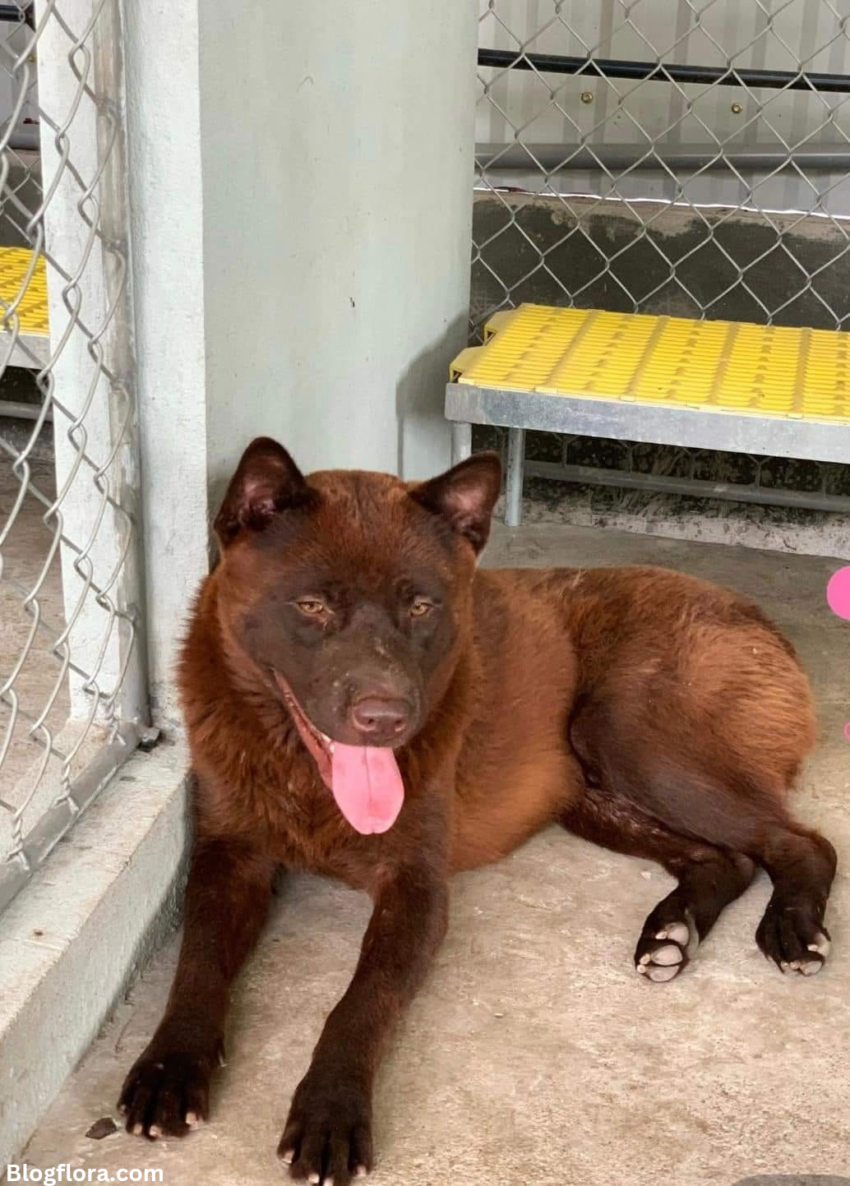The Hmong dog is a rare and ancient breed that originated in Southeast Asia’s mountainous regions, specifically among the Hmong people, an indigenous ethnic group who live in Vietnam, Laos, and Thailand. This breed has a fascinating history and is renowned for its loyalty, intelligence, and ability to thrive in harsh conditions. Understanding the characteristics, history, and care needs of this exceptional dog is critical for those who want to learn more about it
History of Hmong Dogs
For centuries, the Hmong people have been accompanied by their dogs. These dogs were originally bred for hunting, guarding, and herding in Vietnam’s mountainous regions and surrounding areas, making them indispensable to their owners. The rugged terrain necessitated a hardy, intelligent, and versatile dog, and the Hmong dog met the bill perfectly.
Hmong dogs were trained to hunt wild animals such as boar and deer while also guarding their owners’ livestock and homes against predators. Their ability to navigate treacherous terrain with agility and precision made them an invaluable asset to the Hmong people, who relied heavily on these dogs for protection and survival.
Physical Features of the Hmong Dog
The Hmong dog is medium-sized, muscular, and solidly built. Its appearance is strikingly similar to ancient breeds, with short, dense fur that provides warmth in cold weather. The coat can be black, brown, grey, or a combination of these colours. The dog’s physical build reflects its function in the rugged mountain terrain—compact but strong, with a high endurance.
Some of the distinctive physical characteristics of the Hmong dog include:
- Distinctive Tail: One of the most distinguishing features of the Hmong dog is its short or even docked tail, which contributes to its distinct appearance. In many cases, the tail is naturally short, distinguishing this breed from others.
- Strong Legs: With muscular and sturdy legs, the Hmong dog can navigate rocky, mountainous terrain. These dogs are quick and agile, making them excellent hunters and herders.
- Ears and Eyes: The breed has alert, medium-sized ears that stand erect, indicating a constant awareness of its surroundings. Their eyes are expressive and bright, indicating intelligence and concentration.
Temperament and Personality
The Hmong dog is known for its strong loyalty to its owners, often forming a close bond with a single family or individual. These dogs are protective and wary of strangers, making them ideal guard dogs. Their natural instincts as herders and hunters make them extremely intelligent, but they can also be self-sufficient and require a firm, consistent training approach.
Some key temperament traits of the Hmong dog are:
- Loyalty and Devotion: Hmong dogs are extremely loyal to their families. They thrive on strong bonds and are known for their affectionate behaviour with those they trust.
- Protective Nature: As a guard dog, the Hmong dog is naturally suspicious of unfamiliar people or animals, making them excellent at protecting homes and livestock.
- High Intelligence: These dogs are quick learners and excellent problem solvers, but they can also be independent. Early and consistent training is essential to ensure that they are well-behaved and respond to commands.
- Active and Energetic: Given their history as working dogs, Hmong dogs require a lot of exercise and mental stimulation. They enjoy running, hiking, and participating in agility.
Care for a Hmong Dog
Caring for a Hmong dog entails attending to both their physical and mental needs. Their natural environment in the mountains has conditioned them to a rugged lifestyle, so getting enough exercise and mental stimulation is critical.
Exercise: The Hmong dog is an active breed that requires daily exercise to remain healthy and happy. Long walks, hikes, and playtime in a secure environment are ideal. Without enough exercise, they may become bored and destructive.
Diet: A well-balanced diet is essential for Hmong dogs. Given their active lifestyle, they require a high-protein diet to maintain their muscular physique and energy levels. Ensure that you feed high-quality dog food, or consult a veterinarian for specialised nutrition plans.
Training: Hmong dogs require early socialisation and consistent training. Positive reinforcement works well for these intelligent dogs, but their independent streak may cause them to test boundaries. Obedience training is highly recommended to keep them well-mannered.
Grooming: The Hmong dog has a short, dense coat that is relatively easy to groom. Brushing their coat once a week will help to remove loose hair and keep it looking healthy. They do not require frequent baths unless they become particularly dirty during outdoor activities.
Health: Although the Hmong dog is generally healthy and hardy, it is susceptible to certain genetic conditions, as are all breeds. Regular check-ups with a veterinarian will help monitor their health, especially as they get older.
Importance of Finding a Reputable Breeder
If you’re thinking about adding a Hmong dog to your family, you should look for a reputable breeder who values the dogs’ health and well-being. Ethical breeders will provide health clearances, proper documentation, and the opportunity to visit their breeding facilities. This ensures that you’re getting a healthy, well-socialized puppy who’ll be a good fit in your family.
It’s also worth noting that the Hmong dog is still fairly uncommon outside of its native range. This makes finding a genuine Hmong dog more difficult, but also more rewarding, if you’re dedicated to owning a rare and historic breed.
Conclusion
The Hmong dog is a breed rich in history, loyalty, and resilience. Their ancient origins as working dogs for the Hmong people make them an exceptional and valuable companion for those seeking an intelligent, protective, and active dog. With the right care, training, and a stimulating environment, the Hmong dog can be a devoted family pet as well as a capable guardian.
If you’re interested in rare breeds and enjoy the challenge of an energetic, independent dog, the Hmong dog may be a good fit for you. By providing them with the appropriate environment and attention, you will be rewarded with a loyal and loving companion who stands out for both their appearance and personality.

